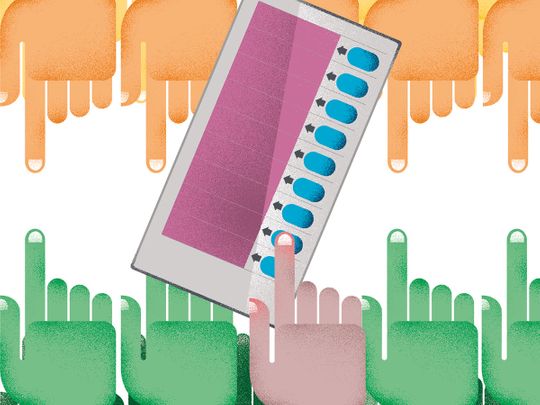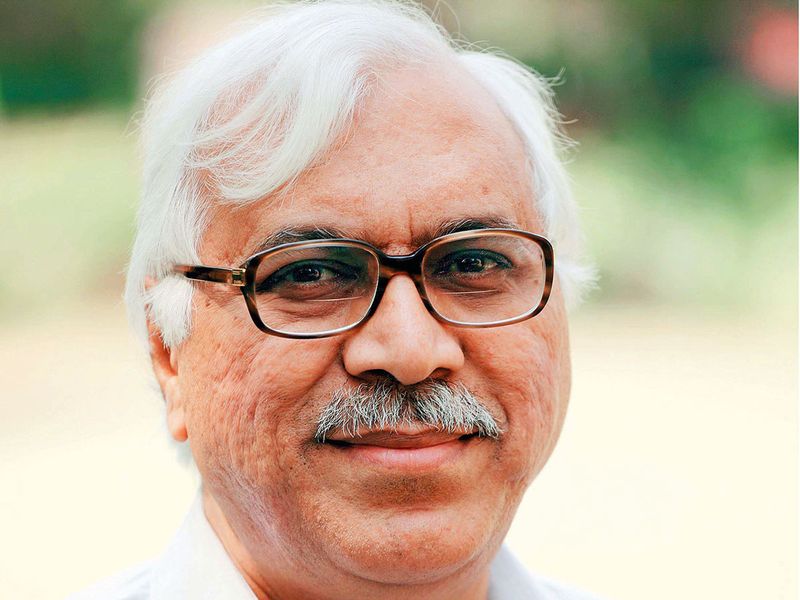
India’s general elections for the Lower House of the Parliament started on April 11 and will conclude on May 23. The political party or the coalition of parties that wins a majority of the 545 seats will form the next government. S.Y. Quraishi, who headed the Election Commission of India between 2010 and 2012, the federal body conducting the elections, explains how elections are conducted and the effort it takes.
How many people are voting?
As Gopalkrishna Gandhi, the scholar of India and grandson of Mahatma Gandhi, aptly described it, “India is valued the world over for a great many things, but for three over others: the Taj Mahal, Mahatma Gandhi and India’s electoral democracy.” It is the 17th general election in India, being held in seven phases over 38 days. Nine hundred million Indians are registered to vote! Around 70 per cent are expected to vote. The voting age in India is 18, and 15 million are voting for the first time.
How do these 800 people conduct elections for 900 million voters?
Well, we couldn’t do it alone! The Election Commission borrows about 12 million employees from various federal and state government departments for the period of elections. You enlist senior civil servants and police officers in the top management. You get the schoolteachers, engineers, clerks, health care workers, security forces and all kinds of support staff.
Private sector employees are not involved in the process, as it would be impossible to ensure their neutrality — a non-negotiable condition. For the duration of the elections, the government employees are deputed to and solely answerable to the Election Commission.

How does the commission move 12 million polling staff members and an enormous amount of polling material across such a massive and diverse landscape?
It is the biggest exercise in managing a single event anywhere in the world! There are a million polling stations across India. About 12 million polling staff members have been deployed. Over 120 trains with more than 3,000 coaches, 200,000 buses and cars are used to transport people and election related materials across the country. And it is not just buses and trains: you also have to hire aeroplanes, helicopters, boats, tractors, motorcycles, bullock carts and mules, elephants and camels as well for transportation.
After the logistics, there is the actual polling and making sure it is free and fair?
The commission appoints more than 2,000 election observers, who travel through various constituencies inspecting whether the elections are transparent, free and fair. They record and report any violations of rules and the model code of conduct. They are assisted by about 140,000 polling officials, known as micro-observers, each assigned to monitor one polling station. Beyond that, the commission also deploys about 75,000 videographers and almost as many photographers, who record any wrongdoing at the polling booths during voting.
Why are the elections held in phases? Almost more than a month!
That is to ensure a peaceful, free and fair process. The commission deploys federal armed police and paramilitary forces to safeguard the election process. They are considered neutral and fair because they are not deployed in their home states. For nearly two decades, all Indian political parties have been demanding that these federal forces be deployed in their constituencies.
But the availability of these forces is limited and they have to be rotated across the country, which necessitates multiple-phase elections.
What prompts such need for wide-scale security?
It is to ensure there is no voter intimidation, that no political actors try to sabotage the polling through interference, intimidation or violence or booth capturing — armed thugs hired by a political party would seize control of a polling place and stuff ballot boxes — which was widespread two decades ago. In 2014, the commission had marked 75,237 villages as sensitive places which had a history of conflict and violence during elections, and where such dangers persisted. Our officials actively identify individuals who have a history of misconduct, threatening or intimidating voters, polling officials or representatives of other political parties on the polling day. The commission had identified more than 200,000 such characters in the last election.
How does the election commission reach voters across such a vast landscape?
The commission does everything to reach every last voter. Election rules require that no Indian citizen should have to travel more than two kilometres to vote, whether they live on the world’s highest mountains or on a desolate island. Thousands of polling officials often walk for two or three days to reach polling stations, which might be otherwise inaccessible. Every vote counts.
A polling booth was, therefore, set up in remote Gir Forest National Park in the western state of Gujarat for the only voter living there: a Hindu priest. The polling officials wait for him to come and vote at any time he chooses. In the northeastern state of Arunachal Pradesh, on the border with China, polling officials hike for a day to reach Malogam village, where one woman is registered to vote. In Ladakh region of Jammu and Kashmir, a polling station is set up at an altitude of 4,327 metres for 12 voters. Polling officials carry oxygen tanks to reach the village of Anlay Pho, which is 4,500 metres above sea level.
Indian elections are intensely competitive. How does the Election Commission ensure that political parties follow the rules and allow the process to be free and fair?
In a huge country with prolonged, phased elections, minimum standards of behaviour are essential for peace, freeness and fairness of the process. To ensure this, the commission created a set of guidelines known as the Model Code of Conduct, which evolved with the consensus of political parties.
The commission enforces the code of conduct right from the day it announces the election schedule. The code is not law, but it carries great moral authority, which makes it very effective. If the commission censures a candidate or a politician for breaching the code of conduct, it can have a serious effect on his or her political fortunes by inviting negative public opinion. Hate speech, asking for votes in the name of religion and caste, using the state machinery for campaign purposes by the ruling party, among others, are considered violations of the model code.
How has the practice of conducting elections evolved with time?
The electoral system in India has been a work in progress from the beginning. During independent India’s first general elections in 1952, separate ballot boxes were used for every candidate. A decade later, in 1962, India introduced the common paper ballot for all candidates in a constituency and voters marked their preference.
Electronic voting machines were introduced in all state elections since 1998 and since 2004 in the parliamentary elections. In 2013, we added the Voter Verifiable Paper Audit Trail, which is essentially a printer attached to the electronic voting machines that allows each voter to print out a piece of paper that shows which candidate he or she voted for. It can be used to cross check the results shown by the machine if there is a dispute. The electronic voting machines are simple, cost-effective, fast and accurate. They are manufactured by two government-owned companies and have turned out to be unparalleled in quality and precision. The results are tabulated in half a day with the electronic voting machines, as opposed to paper ballots, which took between two to three days to tabulate.
Many Indian politicians and activists have questioned the reliability of the electronic voting machines. How credible are those concerns?
Despite having no proof, every political party has questioned the electronic voting machines at some time or another! But when they come to win elections through the same machines, all doubts instantly vanish!
What are the hardest challenges the commission faces?
Despite the great success of the Election Commission as a credible and fair institution, it still faces serious challenges, like abuse of immense amounts of off-the-books financial resources by political parties in the elections. There is also the contagion of fake news, primarily carried on the social media, and the scourge of paid news.












